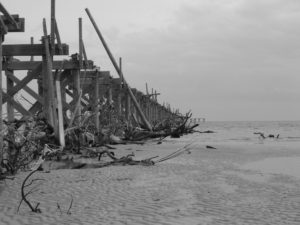 The United States seems to be in a never ending cycle of disaster. Large areas of our country are destroyed and we are forced to continually rebuild. With recent hurricanes hitting our shores and climate scientists stating that we should expect more frequent and powerful storms in the future, we need to ask ourselves if there is something we or our government can do to prevent such damage.
The United States seems to be in a never ending cycle of disaster. Large areas of our country are destroyed and we are forced to continually rebuild. With recent hurricanes hitting our shores and climate scientists stating that we should expect more frequent and powerful storms in the future, we need to ask ourselves if there is something we or our government can do to prevent such damage.
Building codes are the government’s first line of defense against natural disasters. Each community’s code are in place to try to ensure that the standards for building are safe and protect the public. However, for this to work, communities must ensure that codes are adopted and enforced.
An article from the New York times recently covered a house in Mexico Beach, Florida that held up against the devastating damage of Hurricane Michael. Three quarters of the buildings in this area were destroyed, but this house managed to remain standing. The article interviewed the homeowners, who said they built the house with a disaster in mind, elevating the home on pilings and using steel cables with additional concrete in the corners of the house.
This house was built to withstand 250 mph winds, even though the building code requirement in the state was to withstand 120-150 mph winds. Building the house this way almost doubled the price per square foot; however, it allowed the structure to stand against a disaster. Should we require all residents to build this way?
Alternatively, could the United States government find a solution to lessen the damage of these natural disasters? This question was pondered in a recent 60 minutes article that interviewed Henk Ovink, who is the Netherland’s water ambassador. He discussed how the Netherlands is one of the most flood prone places in the world, due to most of the country being at or below sea level. Yet, the Dutch don’t have flood insurance because they don’t need it.
Ovink believes stormwater management can lessen the damange done by storms. The Dutch does this through a system of canals, dikes and windmills that prevent the country from flooding. However, this management comes with a cost: over a billion dollars a year. It may seem like an expensive preventative measure, but compared to what the United States pays for clean up costs ($150 billion for New Orleans, $70 billion for Sandy), it doesn’t seem as ridiculous, but rather necessary.
Ovink’s thoughts have rubbed off on the United States with a new project in Hoboken, New Jersey. Dawn Zimmer was the mayor at the time of Hurricane Sandy. She saw the extreme damage to her city and wants to build smarter to prevent this much damage in the future. They have plans to create a storm surge defense that also functions as a park with a boathouse and outdoor benches. These tools will help keep the Hudson from flooding again and they plan to start in 2019.
Should the government take further precautions and invest in better infrastructure like the Dutch? Should building codes be stricter, causing people to invest more money into more secure structures? We’d love to hear what you think.